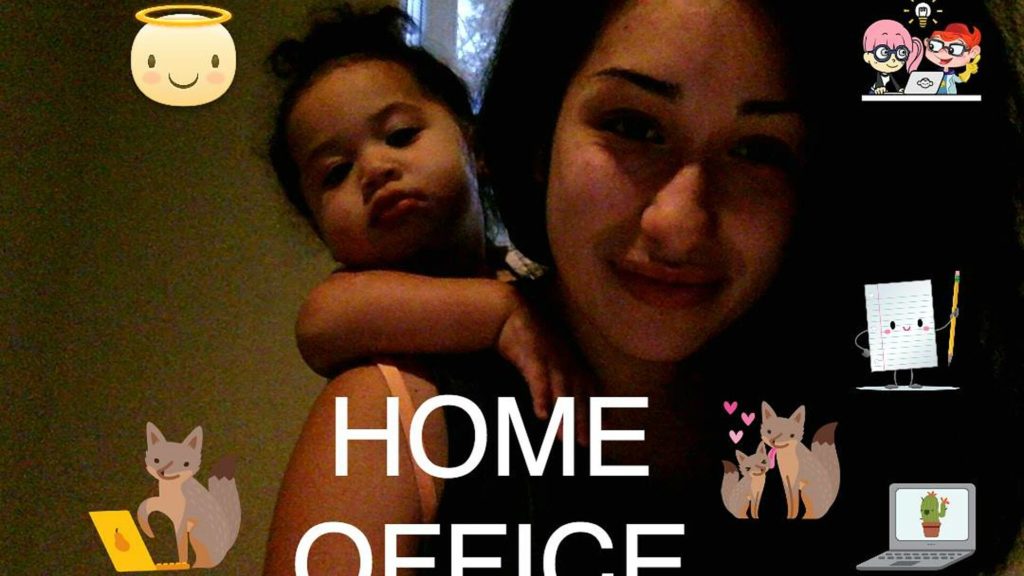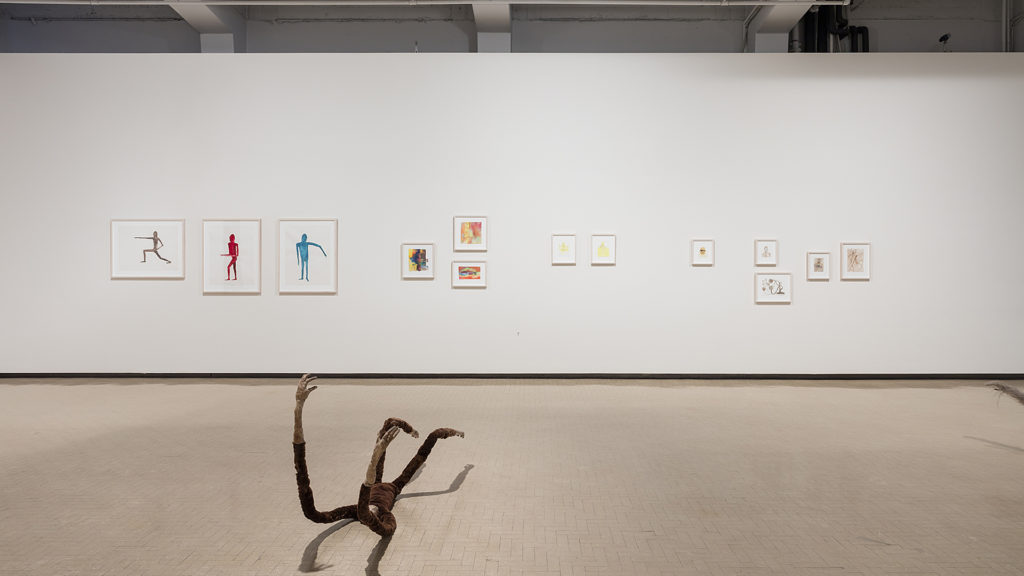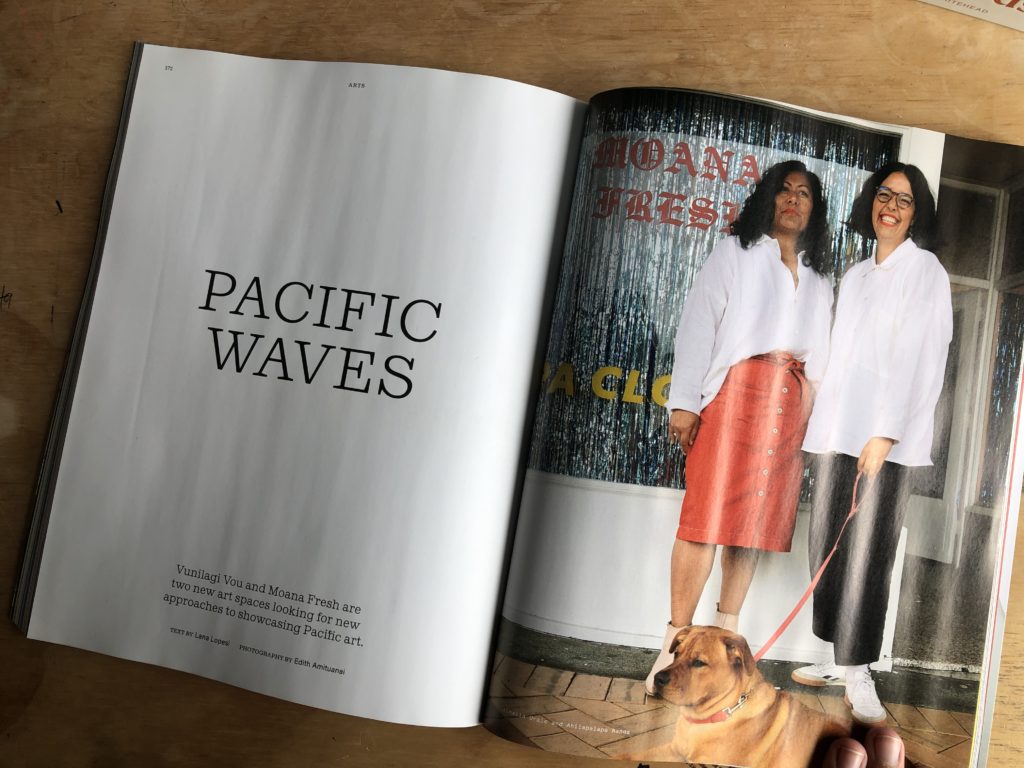.
For the latest instalment in our essay series ‘Art History Is a Mother’—developed in partnership with Verb Wellington—Lana Lopesi discusses her writing career.

‘Art history is a mother fucker.’ That’s how the sentence should end.
Art plus history is art history. Not a sexy combination. More a reminder of the downfall of the humanities within the neoliberal university. A reminder of something loved, once vibrant, perhaps frivolous, now under threat, lifeless, near extinction—a hobby for those with too much time on their hands. A lesser sibling to art proper.
I write about art for a living, but I’m not yet sure if I write art history. Whether today’s writing has historical significance will only be known with time, by whether it gets cited, by whether it has value for thinking yet to happen, by whether it enters the canon. My work as an art writer—now nearing the ten-year mark—has been significantly influenced by thinking around the canon, but how I feel about the canon has changed.
When I started writing about art, I naively thought I could change the world. I thought the addition of my perspective, as representative of many missing perspectives, could stop racist art being made. Louisa Afoa and I started the #500words website in 2012, because of a gap in the writing on Pacific art and a lack of young voices like ours, and to expand and diversify the canon. After #500words, I moved into editorial roles at The Pantograph Punch. There, I wrote about allyship in curation, art’s obsession with diversity, and racism in Francis Upritchard’s work because I thought this would have real impact. Now, all those pieces just feel like iterations of the same idea.

.
Recently, I came across literary scholar Alice Te Punga Somerville writing on canons. It helped me articulate thoughts I had been struggling with.
The point of challenging a canon isn’t to take the logic of the canon (that certain texts and writers are superior to any others) and put it in reverse. Flipping things on their head never undoes power structures—it just reinforces them!
As a Māori woman writing within and about the English literary canon, Te Punga Somerville said,
we challenge canons by drawing attention to how they work. Canons steal the limelight from everyone else, implying they are not as deserving of attention and/or they simply do not exist, so we undermine canons by seeking out the other writers, trying to understand why other texts have been forgotten or ignored (whose purposes has it served to forget them?).
She’s right. When we do this, our work becomes an additive, spicing up the colonial art histories we’ve inherited, hoping things will eventually balance out. But, in the words of American writer Ijeoma Oluo, the un-inclusive canon ‘works according to design’. In Mediocre: The Dangerous Legacy of White Male America, she details how systems and structures built on a racial and gendered hierarchy always require the disempowerment of some to empower others. It’s how they are designed to work. To decolonise them or make them inclusive isn’t possible—it’s to work against that design.
In May 2016, I wrote for the Pantograph Punch about being an artist mum making art. I had one two-year-old, a lot of internalised misogyny, a chip on my shoulder, and an allegiance to neoliberal productivity. I was on an artist residency in Taipei and finished my article saying:
Operating within this arts ecology with a baby on my hip is a radical place to be. Artist mothers and young ones shouldn’t need to compartmentalise their lives for the comfort of the Emins, and I’m glad I haven’t.
I was referring to British artist Tracey Emin, who said being an artist and a mother were mutually exclusive positions. At the time, I felt I had the power to choose my own representation, and that was a loud-mouth brown girl from deep west Auckland cum baby mama who could also turn up intellectually.
I read the piece now and feel sad for the young me, who thought she had to prove Tracey Emin wrong and knew being a mediocre brown woman mother wouldn’t cut it in a sector of mostly white men. I feel sad because I’d spent so much time examining the mechanisms of whiteness that I hadn’t critically examined the mechanisms of masculinity at work. Most of all, I feel sad because I remember how tired I was trying to prove myself in a sector that was and still is working as designed. In trying to prove myself, I was reproducing the system I was endeavouring to critique. By shining the spotlight on myself as an exception, I was reinforcing it.
It took time to confront my lack of power over how I was positioned. In the early stages of my career, I crafted a sense of self from a position of response and retaliation that only stunted my imagination. And I was burdened by responsibility to communities. When not many people who write art criticism look like you, you’re assumed to be identitarian, limiting your range. You are never sure if your opinions are valued, or if you’re just a diversity commission. I snapped.
In Living a Feminist Life, Sara Ahmed writes about the ‘feminist snap’—putting a positive spin on what we commonly call ‘breaking point’. She writes, ‘Sometimes you snap when an effort to do what you’ve been doing is too much to sustain’. Instead of staying committed to a life not working, you snap. A snap is not a starting point, because something has already happened that led to it, but it is the start of something. A snap can give you the freedom to get on with the life you want to live. Ahmed continues:
A case for a feminist life can be made in a moment of suspension: we suspend our assumptions about what a life is or should be. Just opening up room for different ways of living a life can be experienced by others as snap.
These words helped me understand my own snap, which happened a few years ago. I was working as a full-time project manager, a full-time PhD student, a freelance writer, and parenting two children. I couldn’t keep producing at this level, trying to serve everyone. It wasn’t for me anymore.
I snapped, in part, because I realised the level of repetition that the art world required of me. I had become a one-trick pony. Repetition is important—it’s the core of activism—but you wonder how much longer you can keep saying the same things. It’s not that I stopped thinking about the problems, but I was tired of feeling angry, tired of trying to prove myself, and tired of writing about the things that devalued my humanity. Maybe I’m just ageing.
I also snapped because I realised that the ‘Pacific art community’ that I had burdened myself to serve was just a bunch of individuals with different ideas and experiences linked by affirmative-action initiatives and ancestral connection. Serving this community was impossible, because it’s an impossible community. This compounded with the death of my Papa. I saw life differently. My snap brought about an ontological shift. I saw that Western art structures had no room for my full humanity, and that the people who I had told myself I was working for never asked me to do that work.
I realised I had always written in response to something—to oppressions perpetrated in exhibitions and art works or to a community or racialised experiences I had made myself a spokesperson for. But who was I as writer, art critic, art historian? I had no idea. I had never let myself dream about the work I would want to do if I didn’t burden myself with all the things that were wrong. What would I want to say then?
In Living a Feminist Life, Ahmed says,
Citation is how we acknowledge our debt to those who came before; those who helped us find our way when the way was obscured because we deviated from the paths we were told to follow.
In her book, citations are ‘feminist bricks’—‘materials through which, from which, we create our dwellings’. In citing some people not others, Ahmed ‘extends a line’ to particular literatures, and snaps the lines to others.
My time as a racialised and gendered art writer can be understood through an Ahmed-like practice of citation as a way of writing into the canon. Citation has been driven by a desire to connect myself and my peers to our own intellectual ancestries, building a dwelling combining a variety of feminist, Pacific, and BIPOC bricks to extend new lines.

This year, I listened to a podcast by Artspace Aotearoa and Ruangrupa on refusal. It included Ema Tavola, Nigel Borrell, Tanu Gago, Leilani Kake, and Iokapeta Magele-Suamasi—a relational web. These staunch southside arts professionals discussed comfort on the margins. Borrell talked about how refusals offer opportunities for intervention, where one can realign opportunities to benefit what they think is important, where they are centred and not on the peripheries, something groups that face discrimination are naturally great at. Gago discussed the importance for Fafswag asserting their own chronology as a way of countering how institutions use them to reductively leverage a singular moment. This group of creatives were committed to moving their intellectual weight from institutions with glass ceilings to parallel art worlds. As Tavola said, she’s still a foot soldier of Western art, but is learning to work with institutional tools to decolonise Western art frameworks rather than be oppressed by them. Listening to them, I think of how their work will be—and in many cases already has been—canonised, impacting art history and discourse. But, in all of it, they maintain their power; they’ve extended lines, but they’ve also snapped others.
Before I snapped, I overloaded my plate. I felt every opportunity might lead to another and cared too much about ego-driven metrics like importance or impact. Now my work is centred on what bring me joy, ensuring that I can be a whole human in my relationships and not give my power away.
So, now, when I write about art for Metro, I think not about the latest art controversy that will satiate art folk. I stay away from things I would have previous dived into—like Mercy Pictures, OIAs, and high-profile resignations—and focus on the art I care about enough to spend my days thinking through. This includes a decade of specialist writing for specialist publications about Pacific art and artists in ways that contextualise them amongst similarly different experiences of the contemporary world, using expansive trans-Indigenous thought. It includes normalising Pacific arts and artists in mainstream publications, and giving them their rightful place front and centre in the art section. It includes my work on the Pacific Arts Legacy Project, a Creative New Zealand–funded anti-history capturing the multi-layered art genealogies of Pacific artists in and of Aotearoa. Extending lines, an Indigenous ethic of acknowledgement, simultaneously snaps others. It snaps a reliance on the Western art-history canon.

.
I want to platform voices around me. The work of my peers is worth recording, deserves critical engagement, and should be documented for the future. I’ve learnt about so many seminal shows, works, and artists. I wish I knew more about Archill Gallery, which I’ve heard about many times while working on the Legacy Project. It was an important space for Pacific art, but the curators are no longer here to tell us about it. I wish I could have felt the radicalism of the Tu Fa’atasi Festival in Wellington or seen the bloodclot sculpture made by Lonnie Hutchinson at one of the early male-dominated Tautai sculpture symposiums. Writing for me is an act of remembering, not just for you in the now but remembering for the future.
I write about art as a mother, extending lines of thought and citation, so it will all be laid bare for my kids. I wonder what they’ll think of the work I do, if they’ll care, if they’ll be proud or embarrassed. It could go either way. I can’t change the Western art canon for shit, plus it sounds like a hard job. Art history is a mother fucker, but only if you give it too much power. If art is a kind of Hunger Games, where we’re all after the same prize, then all but one of us will die, because the winner keeps winning and everyone else remains hungry, because the game is working according to … SNAP.
Extend the line.
—Lana Lopesi
_
Lana Lopesi’s writing has featured in the Pantograph Punch, Metro, Art New Zealand, and Afterall. She is Editor-in-Chief for the Creative New Zealand Pacific Arts Legacy Project, a digital-first Pacific art history told from the perspective of artists. Bridget Williams Books published her book False Divides in 2018, and will publish her next book Bloody Woman.

